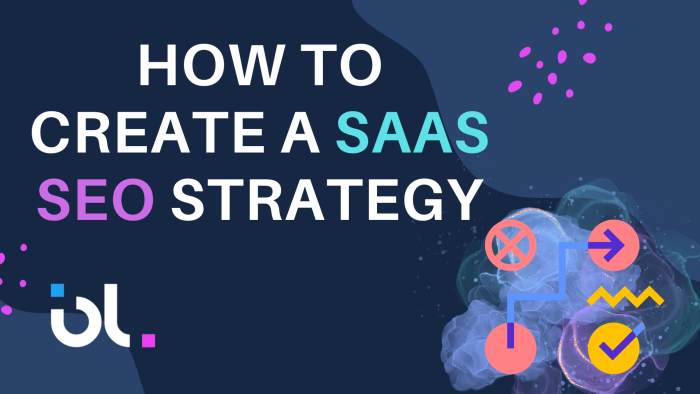With good planning in place, you can design a strategy that will help drive sustainable traffic for long-term business growth. Before we dive into the steps to create a great SEO strategy for your software company, let’s get familiar with SaaS SEO.
What Is SaaS SEO?
SaaS SEO is an approach used to increase the organic traffic to your SaaS website by implementing strategies that help you rank first on Search Engine Results Pages (SERPs). Just like your regular Search Engine Optimization, SaaS SEO also focuses on on-page SEO (content structure, internal linking, keyword optimization), off-page SEO (backlinks), and technical SEO (website speed and pages) to achieve the desired result.
Why Is SaaS SEO Important?
While most SaaS companies use Google Ads, Social Media, and affiliate marketing to increase awareness and scale their business within a short period, the costs of maintaining the campaigns can become expensive in the long run and the traffic stops when you turn off or reduce the cost of advertising. That is why most SaaS companies are shifting to Search Engine Optimization. SaaS SEO helps companies generate consistent traffic organically with less investment compared to traditional online advertising. SaaS SEO focuses on increasing your business search visibility on SERPs to put it in front of potential customers. So, when someone searches for software or services related to the ones you offer, you get a higher chance of reaching customers and clients if you rank on top of search results for the search query.
Steps To Creating An Outstanding SaaS SEO Strategy For Your Company
1. Identify Your Brand’s Purpose
Identify your brand’s purpose and what you offer as a SaaS company. You can start by asking questions like; Who are we? What service do we offer? Who are we targeting?
These questions will let you learn more about the type of people you target, their location, and possible search queries they could enter on Google to search for the service you offer.
Other questions to ask include;
- What keywords would you like to be found on Google?
- What queries are your ideal customers searching for?
- Who are your competitors?
- What software categories does your product/service fit in?
- What products do you integrate with?
- What are some standard industry terms or acronyms?
It is important to be aware of these questions because your answer will help to better understand how and where to begin your campaign.
2. Create a Keyword List and Analyze Competitors
It would be best to use a keyword research tool. These tools make your research easier and faster. Tools like Ahrefs, UberSuggest, or SEMRush are some of marketers’ top-rated tools for keyword research. After choosing the one that suits you, you can start with competitor analysis by targeting the keywords your direct competitor is ranking for. To do this, enter a broad relevant keyword into your keyword research tool and pick out the top 3 websites ranking for the keyword. Then, enter each domain into the tool to get the ranking keywords. You can filter these keywords based on location if you target a specific country. For example, if you are targeting the US market, filter the results by location to get the keywords they rank for in the United States. However, if you want to go global, there is no need to filter by country. After getting all the keywords needed, you should export the entire list. After downloading the keywords, you can start selecting the ones you need according to KD (Keyword Difficulty), traffic, cost per click (CPC), competitive density, click-through rate (CTR), and more. This allows you to better organize your keywords while gaining visibility into your competitors’ positioning.
3. Prioritize Your Keywords
While sorting all the keywords, arrange them based on priority. To do this, arrange the keywords with “High,” “Medium,” or “Low” and remove other keywords you don’t need. Once you’ve marked them all, filter for your high keywords and select your top 20. When choosing these keywords, you need to consider these three metrics:
Monthly Volume
Monthly volume is a metric used to measure the estimated number of times a keyword is searched for in a month. The monthly keyword volume gives you an estimated amount of traffic you could drive to your website when you target that keyword. As a SaaS company, it’s important to only spend money on content that will drive a decent amount of traffic to your website because the higher the traffic, the higher the chance of getting a new customer.
Difficulty
Just as the name implies, Keyword Difficulty is a metric used to determine how difficult it is to rank for a keyword. Several factors are considered when determining the Keyword Difficulty score. Domain Authority, URL Rating, Backlinks, and the number of Referring Domains are some factors that influence Keyword Difficulty. It is also important to begin your content campaigns with low-difficulty keywords. Keywords with lower numbers are easier to rank for on SERPs because the competition is minimal – a keyword is considered low difficulty if the KD is below 20.
Organic CTR
You might rank a keyword with thousands of monthly search volumes but still struggle to get traffic. Why? This is because some keywords have a poor organic CTR due to SERP features like Snippets or Ads. The higher the number of Google SERP features available for people to click on, the lower the expected CTR. Therefore, it is important to research carefully and select keywords with a decent CTR.
4. Map Keywords To The SaaS Buyer Journey Stages
Repeat the prioritization process, but this time with a column that associates each keyword with “Awareness,” “Consideration,” or “Decision.” This is especially helpful when creating web and landing pages or developing a content marketing strategy. When you look at the buyer’s journey, you can get a better idea of how content fits together and if you’re leaning too much in one direction or the other – too focused at the bottom, or the top, of the funnel.
It can be tricky during the “Consideration” stage because some people may quickly move from the awareness to the decision stage. Search terms for consideration are more exploratory. The user has identified their issue but is still looking for a solution because they are unaware of one. For instance, an “automated blogging tool” would probably still be considered. Similarly, if someone is looking for a template, that is something to consider.
They may not have decided to purchase software, but they are looking for the best one. There are a few phrases that signify purchasing intent for software or SaaS solutions, known as the “Decision” stage.
These keywords include;
- “Software”
- “System”
- “Platform”
- “Program”
- “Tool”
- “Best”
- “Buy”
- “Pricing”
- “Review”
5. Build Your Topic Clusters
The next step is to group your keywords into clusters. When you’re done, arrange your keywords by volume in descending order (highest to lowest). From a content creation perspective, you should save your broadest term (typically the one with the highest volume) for your pillar page, which will be your lengthy “definitive guide” post. It’s more of a “guide” than a “rule” because there are situations where it might not be the highest volume.
6. Write SEO-Optimized Content
Start by writing content for the terms with lower search volume (those will be the supporting pieces that will connect to your pillar piece), and then write your long-form piece, touching on the various supporting elements from your pieces. Before putting pen to paper, do a Google search for the keyword first. The results you see on SERPs will let you understand the format of answers the users need (also known as “search intent”).
These post formats include;
How-Tos
These posts outline the steps the reader must follow to solve a problem or achieve the desired result. How To articles guide a reader on the steps to solve a problem. You can write a detailed guide for readers on how to use your software or fix any problems encountered while using the software.
Listicles
A listicle post is structured as a list of related entries. This could be a list of names, products, pictures, ideas, or locations. You can use listicles to promote your SaaS product or service by creating a ” best buy” guide and putting your product on top of the list with a detailed review that will convince the customer to purchase.
Product Review
A product review type of post gives you a great opportunity to pull traffic and generate a steady stream of sales. If you create awareness, people will learn about your product and want to learn more by reading a review. The most interesting part is that 90% of people who use a review search term have decided to purchase the item or are, at the very least, strongly considering doing so. Most of these buyers are probably searching for this product on Google while another tab is open with the checkout page. These keywords are so profitable due to this “intent to purchase.”
7. Use The 70/20/10 Rule
70% on-page, 20% internal linking, and 10% link building is one rule you should never forget. These three are the pillars of SaaS SEO; if one is left out, your campaign will not deliver.
Dedicate 70% of your effort to creating quality SEO-optimized content while including the 20% internal linking rule. Internal links let the Google algorithm understand your website structure and make it easy for search engine robots to crawl your website.
You should also optimize your page URL, meta title, meta description, and Alt tags in addition to quality content. The most important places on your website where the exact keyword you want to rank for must appear are your meta title and meta description.
To support your on-page SaaS SEO effort, build quality backlinks to your web pages. Ensure the links are relevant and tend to give you referral traffic which increases your chance of making more sales and signals to Google that you are getting active links.
Always keep in mind that you should write for your readers rather than search engines. Google will give you high rankings if your content is readable and responds to the user’s query.
Wrapping Up
For most successful SaaS Companies, their effective SEO strategy is the one behind their success. Hence, It is crucial to understand how to design the ideal SaaS SEO strategy, the crucial areas you’ll need to concentrate on, and how to identify opportunities to reach your target audience. This article has walked you through the steps to launch your SaaS SEO campaign. We wish you success as you launch your SaaS SEO journey! Contact us if you need help and we will create a customized strategy for you!




